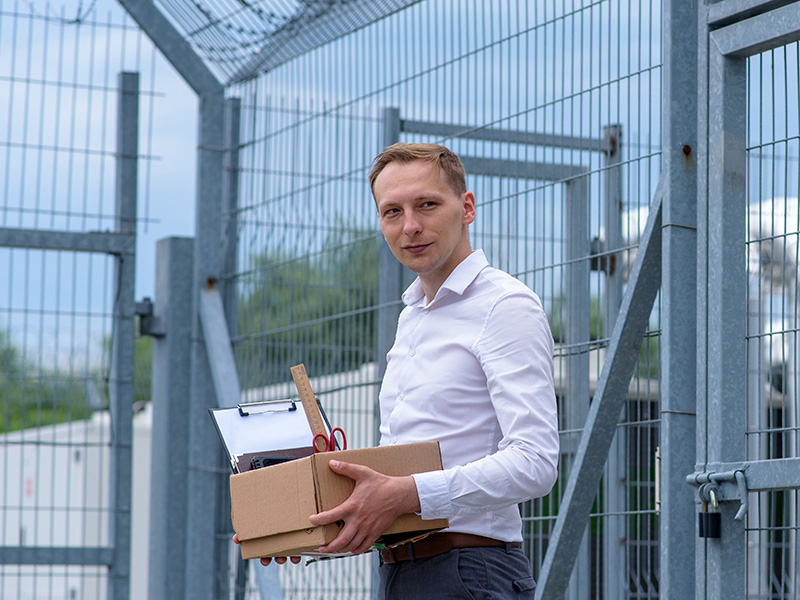Digital transformation. Modernization. Digitization. These words are different ways of saying the same thing: implementing solutions to help your organization move at the speed of business today. And to do that, you need to manage, store, secure, and utilize your entire data estate—that’s all the data your organization owns—in a way that protects your customers and provides insights on how to better meet their needs and better engage them at every touchpoint.
When building an estate, an architect starts with the foundation. The foundation of your data estate is the data center: the place where your servers are, whether on-prem, cloud-based, or hybrid. Let’s start there.
What are data centers?
Data centers used to be all physically on site. Every business using data needed their own on-prem servers and the right rooms to put them in with temperature control and all the infrastructure needed to accommodate cabling for communication and sending data where it needed to go.
With the evolution of the cloud, that’s changed. Now everyone can not only work remotely but their organization’s data center can be remotely located. They can change the number and power of the servers they use with a few clicks and do so only when they need them. The infrastructure is also in the cloud; apps, networks, and workloads can all live there.
But data centers don’t have to be fully cloud-based. They can still be on-prem and serve your organization and its data estate well, or they can be a hybrid model of on-prem and cloud-based servers.
How modernized data centers help businesses
There’s no reason to collect data if you aren’t going to do anything with it. But with a modernized data center, all that information can drive better decisions throughout your organization. When your data estate has this foundation, you eliminate silos, create a single source of truth, and provide easy access to whomever needs it, when and wherever they need it.
These improvements result in efficiency gains across the whole organization. Your people can find the data they need quickly, share it just as easily, and trust that it’s also reliable. And as your organization continues to grow, modernized data centers can help you scale your operations without losing productivity.
Securing your data estate
It’s no secret that data breaches are a major concern for any business working with sensitive information. New compliance regulations issued by various government bodies now make data estate security not just a good idea, but the law. And while there are numerous steps throughout the data lifecycle where you must implement solutions to ensure security, again we start with the foundation of your data center.
Take steps to ensure the physical aspects of your data center are designed to ensure your data won’t come to harm. If any portion of your data center is on-prem, have a professional re-evaluate the room’s cooling system, the servers’ fan functionality, what happens in the event of a fire or flood, and automatic redundant backups. Consider dispersing your system as well to help reduce those physical vulnerabilities.
Data centers are increasingly becoming virtual. Providers like Amazon, Google, and Microsoft all offer cloud storage options built on a virtual infrastructure. As long as you’ve vetted a cloud data center provider, that part is nothing to worry about. Cloud security relies on zero trust controls to ensure that your data stays safe, no matter where it might be stored.
How the evolution of data centers impacts your data estate
While cloud migration continues, many organizations still operate at least partially on-prem. Some have application needs best served with on-prem servers and others have made significant investments in on-prem infrastructure that still meets their needs.
Data centers are evolving along with business needs, with hybrid models becoming commonplace. And even solidly on-prem centers are trending toward a more dispersed design to further protect data estates from vulnerabilities. When evaluating your current data center, here are some impact points to consider.
Cloud-based and dispersed components reduce the hazards of outages.
Service outages, whether caused by lost power or other disruptions, can be an expensive blow to productivity for your business. Cloud and dispersed on-prem data center components make it far less likely that one threat—whether flood, fire, or cyberattack—would take out your whole data estate.
Cloud-based data centers offer ease and efficiency.
Building and maintaining servers on-site requires a dedicated team of IT professionals. When you migrate to the cloud, you free up your core IT staff to focus on more important strategic initiatives.
Data centers play an important role in backup and recovery.
One of the best ways you can protect your business is to have a robust data backup and recovery plan. Whichever data center configuration you choose, know that it greatly impacts exactly what that backup and recovery plan is. And on the flip side, a desired backup and recovery plan can and should influence your configuration choices.
The data center is your foundation; your technology strategy is the blueprint
Data centers play an important role in the way your business protects and secures the sensitive information in your data estate. But they’re only one part of a much larger technology strategy. If you’re not sure how to fit all these pieces together, an experienced partner can help.
Get tailor-made solutions for your technology needs.
Share:







